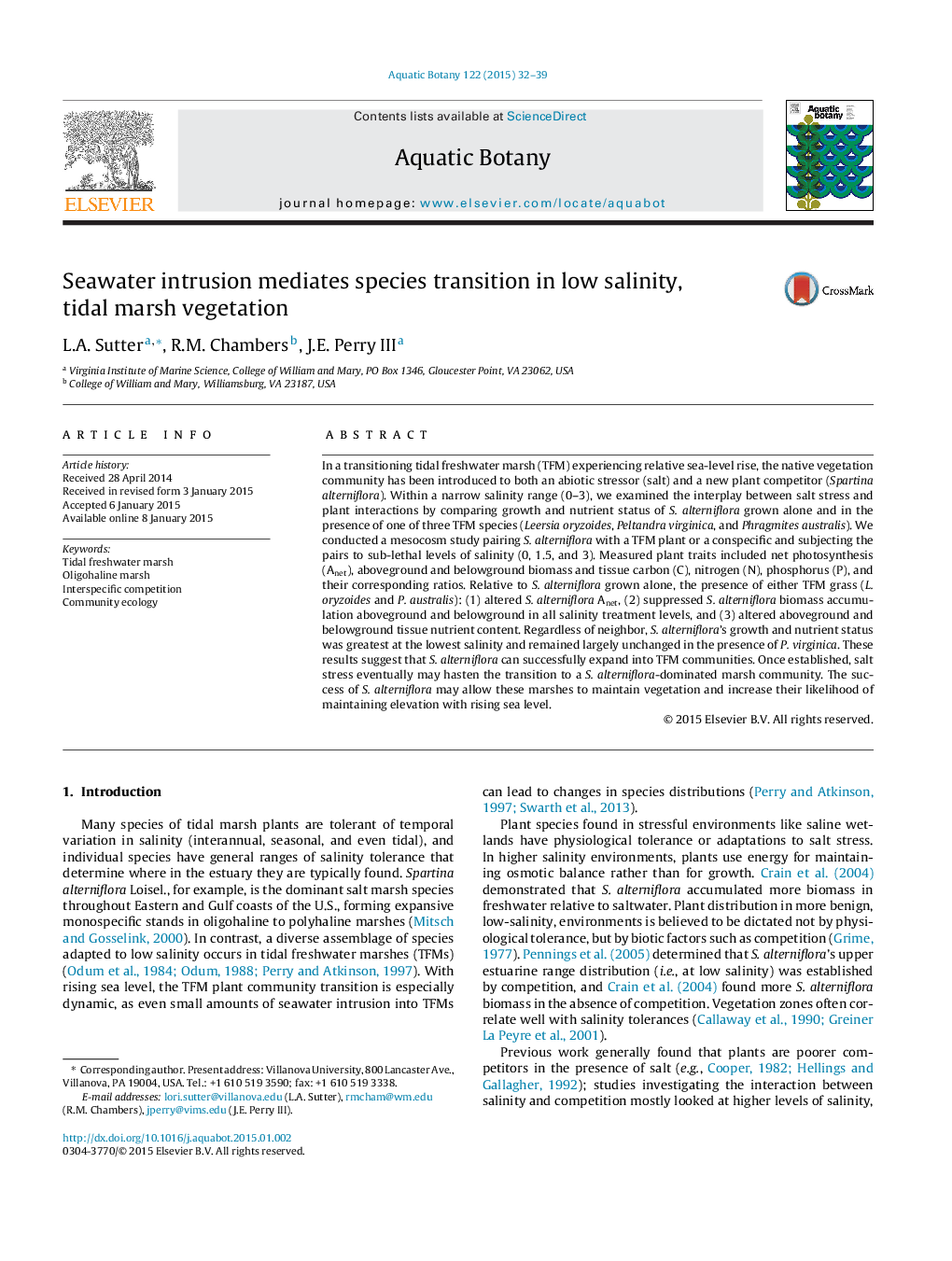| کد مقاله | کد نشریه | سال انتشار | مقاله انگلیسی | نسخه تمام متن |
|---|---|---|---|---|
| 4527671 | 1625820 | 2015 | 8 صفحه PDF | دانلود رایگان |
• Mesocosm testing Spartina alterniflora response to three neighbors and salinity.
• S. alterniflora responded neutrally to presence of current, dominant perennial.
• S. alterniflora, in the presence of non-dominant grasses, reduced biomass.
• S. alterniflora may be able to succeed in low salinity marshes.
• Transition to S. alterniflora may be key to freshwater marsh survival.
In a transitioning tidal freshwater marsh (TFM) experiencing relative sea-level rise, the native vegetation community has been introduced to both an abiotic stressor (salt) and a new plant competitor (Spartina alterniflora). Within a narrow salinity range (0–3), we examined the interplay between salt stress and plant interactions by comparing growth and nutrient status of S. alterniflora grown alone and in the presence of one of three TFM species (Leersia oryzoides, Peltandra virginica, and Phragmites australis). We conducted a mesocosm study pairing S. alterniflora with a TFM plant or a conspecific and subjecting the pairs to sub-lethal levels of salinity (0, 1.5, and 3). Measured plant traits included net photosynthesis (Anet), aboveground and belowground biomass and tissue carbon (C), nitrogen (N), phosphorus (P), and their corresponding ratios. Relative to S. alterniflora grown alone, the presence of either TFM grass (L. oryzoides and P. australis): (1) altered S. alterniflora Anet, (2) suppressed S. alterniflora biomass accumulation aboveground and belowground in all salinity treatment levels, and (3) altered aboveground and belowground tissue nutrient content. Regardless of neighbor, S. alterniflora’s growth and nutrient status was greatest at the lowest salinity and remained largely unchanged in the presence of P. virginica. These results suggest that S. alterniflora can successfully expand into TFM communities. Once established, salt stress eventually may hasten the transition to a S. alterniflora-dominated marsh community. The success of S. alterniflora may allow these marshes to maintain vegetation and increase their likelihood of maintaining elevation with rising sea level.
Journal: Aquatic Botany - Volume 122, April 2015, Pages 32–39
